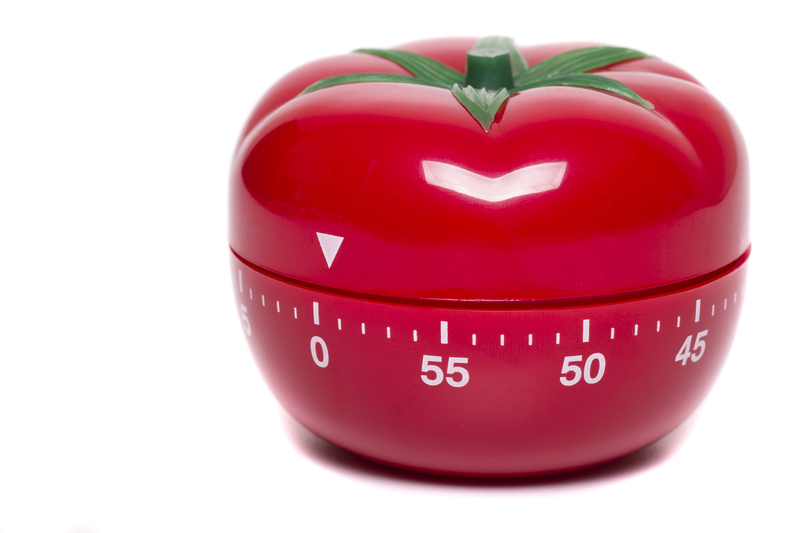Secrets to Achieving a Flawless Jewelry Finish
Posted on 10/09/2025
Secrets to Achieving a Flawless Jewelry Finish
Creating luxury jewelry that dazzles and gleams relies on more than just precious metals and dazzling gemstones; it is the impeccable finishing process that gives each piece its stunning, mirror-like allure. Whether you are a professional goldsmith, an aspiring jewelry artist, or a passionate hobbyist, understanding how to achieve a flawless jewelry finish will elevate your craft and leave a lasting impression.
Understanding the Importance of a Flawless Jewelry Finish
The finish of jewelry is not merely cosmetic--it is what distinguishes amateur work from professional-grade masterpieces. A flawlessly polished piece reflects the light beautifully, highlights the metal's luster, and emphasizes the brilliance of any stones it contains. In addition, a high-quality surface finish also adds protection, preventing premature tarnish and wear.
- Enhances Visual Appeal: Shiny, smooth surfaces draw attention and communicate value.
- Protects Against Corrosion: Proper finishing creates a barrier against moisture and air.
- Prevents Irritation: Smooth jewelry feels comfortable and is safer against skin.
- Increases Longevity: Fine finishing techniques make jewelry more durable over time.

Key Factors Affecting Jewelry Surface Finish
Achieving a perfect jewelry finish is a science and an art. Several factors influence the outcome, each requiring attention to detail and skillful execution:
- Material type: Gold, platinum, silver, and other metals require tailored approaches.
- Design intricacy: Ornate, filigree, or textured designs demand customized finishing techniques.
- Stone setting: Jewelry with delicate gems needs careful handling during finishing to prevent damage.
- Intended style: Is the goal a mirror shine, a matte satin, or a hammered effect? Each finish requires a specific method.
Essential Tools for Achieving a Perfect Jewelry Finish
Before diving into techniques, it is essential to have the right jewelry finishing tools at your disposal. Professional results start with proper equipment:
- Files: Remove excess metal and shape the piece.
- Sandpaper and abrasive pads: Gradually refine and smooth the surface.
- Polishing motor/buffs: Give a high shine using a range of soft and medium wheels.
- Polishing compounds: Different grits and materials help deliver a flawless shine.
- Ultrasonic cleaner: Dislodges tiny particles and debris from hard-to-reach crevices.
- Tumblers (vibratory and rotary): Bring consistent polish to large batches or intricate pieces.
Investing in high-quality, specialized tools increases efficiency and elevates the final finish. Each tool has a purpose, contributing to the layered process of perfecting jewelry surfaces.
Step-by-Step Secrets to a Flawless Jewelry Finish
Ready to reveal the secrets of perfect jewelry finishing? Master the following step-by-step process, combining traditional artisan methods with modern innovations.
1. Meticulous Prepping: Filing and Smoothing
Begin by safely removing excess solder, burrs, and tool marks. Use high-quality jewelers' files, progressing from coarse to finer cuts. Always file in one direction to avoid scratching. Follow with abrasive pads or sandpaper in successive grits (from 400 to 2000), ensuring an even, silky-smooth foundation.
- Work patiently--any remaining flaw at this stage will show in the final polish.
- Use fine micromesh pads for small crevices or curved surfaces.
2. Cleaning Between Stages
Between each stage of sanding and polishing, clean your piece thoroughly--this minimizes the risk of grit contamination that causes unwanted scratches. An ultrasonic cleaner or a gentle soap solution with a soft brush is perfect for this task.
3. Pre-Polishing: Removing Fine Scratches
Pre-polishing is crucial for eliminating microscopic scratches that are invisible to the naked eye, but would become glaring under a high polish. Use a medium polishing compound (such as Tripoli) on a medium-soft wheel to buff the entire piece gently, holding jewelry securely but avoiding overheating.
- Change buffs and compounds for each new stage to prevent cross-contamination.
- Examine your work under bright, indirect light, using a magnifier if needed.
4. Final Polishing for a Mirror Jewelry Finish
For the signature mirror-like jewelry finish, switch to a fine polishing compound like rouge. Buff using a soft, clean wheel at medium speed. Pay attention to high points and flat surfaces, moving the jewelry constantly to avoid uneven burnishing or swirl marks.
- Be extra careful around prongs and delicate settings to avoid dislodging stones.
- Use a separate, specialized brush for reaching deep grooves in intricate designs.
5. Ultrasonic and Steam Cleaning
After achieving the desired shine, it's vital to remove all polishing residues. Ultrasonic and steam cleaners eliminate lingering compounds and leave metal surfaces spotlessly clean. This ensures a truly flawless jewelry surface and prevents future dullness in wear.
6. Finishing Touches: Specialty Surface Effects
Sometimes a flawless jewelry finish does not mean mirror-polished. Satin, brushed, or hammered textures achieve unique aesthetics. To create brushed or matte finishes:
- Use fine steel wool, abrasive pads, or a bristle brush, moving always in a uniform direction.
- For hammered textures, use a polished hammer and support the metal on a firm surface, creating consistent patterns.
Add a protective coating such as microcrystalline wax or a rhodium dip for white metals to enhance shine and prevent tarnish.
Common Mistakes to Avoid in Jewelry Finishing
Even skilled artisans sometimes encounter finishing pitfalls. Here's how to steer clear:
- Rushing the sanding process: Impatience here leads to missed imperfections--take your time.
- Using worn-out abrasives: Spent sandpaper loses effectiveness and can mar surfaces.
- Overheating the metal: Excess friction during polishing discolors or warps metal--light, even pressure is key.
- Neglecting cleaning: Debris caught in a polishing wheel can scratch your work.
- Cross-contaminating compounds: Always use dedicated buffs and compounds for each stage.
- Failing to inspect under good lighting: Shadows and poor visibility hide scratches and marks.
Expert Tips for Consistent, High-Quality Jewelry Finishing
Elevating your jewelry finishing skills goes beyond technical know-how. Incorporate these professional secrets for stand-out results:
- Develop a Finishing Routine: Follow the same steps every time for predictably perfect results.
- Keep a Clean Workspace: Dust and debris can ruin the finest finish--clean as you go!
- Maintain Tools Regularly: Buffs, wheels, and files wear down--replace or clean them as needed.
- Experiment Mindfully: Test new materials on sample pieces before applying them to finished work.
- Document Settings: Record compound types, tool speeds, and pressure used for each metal, building a custom reference.
- Train Your Eye: Compare your results to high-end commercial pieces--spot the subtle differences and learn from them.
Advanced Techniques: Modern Innovations in Jewelry Polishing
Today's jewelry makers have access to state-of-the-art technology and materials for even better results. Some notable advances include:
- Magnetic Polishers: Use fine stainless pins and magnetic force to reach and polish deep inside complex designs, ideal for chain links and filigree.
- Laser Smoothing: Recent innovations allow ultra-fine surface smoothing for certain metals, virtually erasing tool marks.
- Nano-Coatings: Invisible protective films extend brightness and resist fingerprint marks on high-polish pieces.
- Wet Grinding Systems: Reduce dust, prevent overheating, and provide an even finer, more durable polish.
Jewelry Finishing for Different Metals: A Closer Look
Each precious metal behaves uniquely during polishing. Here's how to tailor your methods for perfect jewelry finish by metal type:
Gold (Yellow, White, Rose)
- Use specialized gold polishing compounds and apply gentle pressure to avoid thinning delicate settings.
- White gold often benefits from a final rhodium plating for crisp whiteness and extra shine.
Silver
- Silver surfaces scratch easily, so always use soft buffs and gentle compounds.
- Protect the final finish with anti-tarnish coatings or keep boxed until wear.
Platinum
- Very hard, requiring more aggressive abrasives--but finish with fine compounds to prevent a "frosted" look.
- Final polish leaves a signature, almost "wet" shine--a hallmark of platinum jewelry.

Maintaining a Flawless Finish After Completion
Achieving a flawless jewelry finish is just the beginning--ensuring it lasts is equally important. For jewelers and clients alike, proper care keeps the sparkle alive:
- Store pieces separately: Prevents accidental scratches from contact.
- Avoid chemicals and harsh cleaners: Remove before swimming, showering, or cleaning.
- Gently buff after use: A jewelry polishing cloth maintains luster between professional cleanings.
- Schedule regular professional checks: Ultrasonic and steam cleaning restore original brilliance.
Conclusion: Elevate Your Craft with the Secrets of Flawless Jewelry Finishing
From polishing jewelry to creating beautifully unique textures, the path to a perfect finish is defined by patience, precision, and ongoing learning. Mastering each stage--from careful prep and meticulous sanding to expert buffing and modern innovations--ensures you'll deliver premium, enduring jewelry that clients adore.
Remember: true brilliance is revealed in the finish.
Take pride in your process, invest in the best tools, and treat each piece as a work of art. With these secrets to achieving a flawless jewelry finish, your creations will shine for generations to come.



